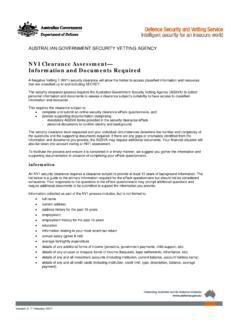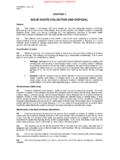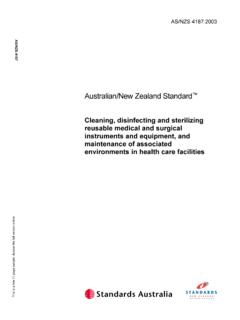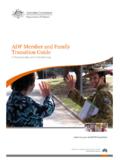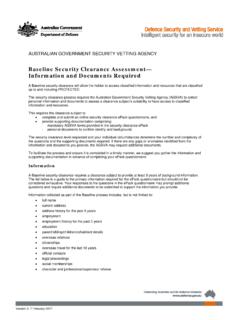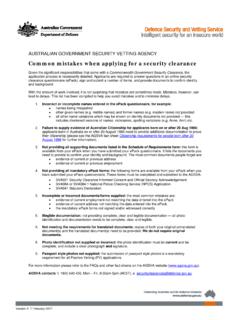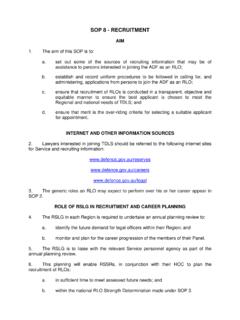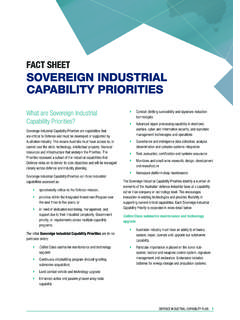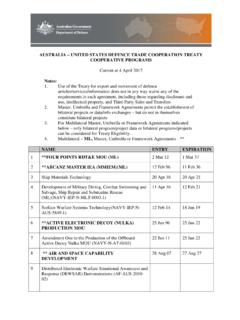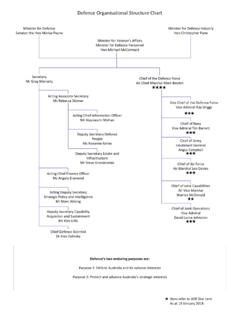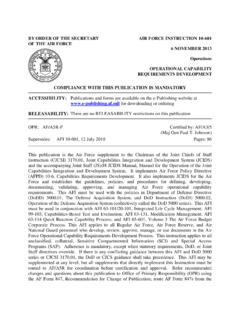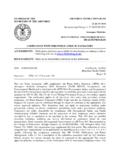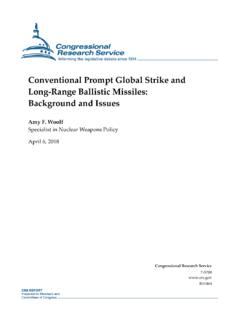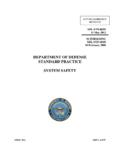Transcription of The Simplified Defence Business Model
1 The Simplified Defence Business ModelDefending Australia and its National is a Business Model ?1. A Business Model is a Simplified representation of how an organisation works. It describes an organisation s outcomes (what), and the functions through which it will deliver these outcomes (how). 2. A Business Model is a Simplified description of a complex real world organisation. A Business Model is a description, or a map, that allows for an understanding of the organisation s fundamental purpose without having to deal with all its characteristics and does Defence need a Business Model ?
2 3. Defence needs a Business Model to help it better define the roles and responsibilities of the various Groups and Services, and distinguish policy and core Business from service delivery. A Business Model will help to improve efficiency and effectiveness within Defence , assisting to reduce unnecessary bureaucracy and improving our understanding of the The development of a Business Model for Defence was a part of a key Strategic Reform Program (SRP) reform initiative that has helped to clearly articulate Business functions and high-level processes across Defence that support the delivery of the key outputs we Defence Business Model5.
3 In Defence , a Business Model will help all personnel to:a. identify the relationship between the work they and their unit/area does and how that work contributes to Defence s key outputs;b. support strategic planning and the development of appropriate agreements and arrangements with stakeholders;c. better understand accountability in Defence and how those arrangements should be best structured;d. consider how to optimise organisational structures to ensure the most efficient and effective delivery of Defence outcomes; ande.
4 Better understand the potential for future risk to the delivery of key outputs and the Defence Simplified Defence Business Model Overview6. Defence s Business Model recognises the centrality of capability in the delivery of outputs to Government. Capability is managed and integrated to provide joint effects and is enabled by a range of supporting functions. We have chosen to simplify the Business Model to describe that basic Business of Defence in an easily understandable manner. Simplified Defence Business MODEL3 Strategy & Policy7.
5 The Simplified Defence Business Model is at Figure was the Model developed?8. In developing the Model , we took account of the complexity and structure of Defence ; the substantial interrelationship of accountabilities, authorities and responsibilities between those who produce the Defence outputs and those that enable the production of these outputsFigure 1: The Simplified Defence Business ModelEnabling FunctionsCapability ManagementOutputsCapability IntegrationJoint Force Coordination & PrepardnessDepartmental LeadershipGovernment GuidanceArmy CapabilityJoint Force-in-BeingIntelligence CapabilityNaval CapabilityJoint Force OperationsJoint Force IntegrationAir Force CapabilityHealthLegalScience & TechnologyCapability DevelopmentHuman ResourcesGarrison & Estate ManagementAudit & ControlsLogisticsSecurityMateriel Aquisition & SustainmentInformation & Communication
6 TechnologyTrainingFinancial Management & ReportingNational and International engagement and advice to governmentNational Intelligence ProductsObilgations to GovernmentDefence s main outputs9. Defence produces five main outputs for Government. They are:a. Joint Force Operations - The coordinated use of the Joint Force-In-Being, often with other instruments of national power, to meet national strategic Joint Force-in-Being - The standing, prepared force that provides options to Government for future joint force operations.
7 C. National Intelligence Products - All-source intelligence assessments and other products to support Defence and national level decision making and the planning and conduct of ADF and other Simplified Defence Business Model is based on four critical and fundamental Business activities, which when integrated together represents Defence s organisational value Engagement and Advice to Government - The suite of relationships between Defence and the Government and Parliament, with other agencies of Government, other Governments and Defence Forces, Australian industry and the wider Australian community, as well as the provision of advice to Government on all aspects of the Department s Obligations to Government - The breadth of obligations and compliance requirements that form the basis of Defence s reputation with Government and the Australian are Defence s main outputs delivered in the Model ?
8 10. While Defence does many things, and has many internal Business processes, the Simplified Defence Business Model is based on four critical and fundamental Business activities, which when integrated together represents Defence s organisational value chain. These activities are:a. Enabling Functions those functions whose role is to support Capability Management through the provision of internal Departmental guidance, policy and management oversight and specialist support, delivered wherever possible utilising a shared services delivery Model to capability Capability Management - those functions that involve the raising.
9 Training and sustainment of forces or specific capabilities at specified levels of preparedness to meet the Government s Capability Integration those functions that integrate single Service or Group capabilities in order to develop and sustain the Joint Force-in-Being (the ADF), and to prepare forces for specific joint operations, as directed by Defence Outputs the five major outputs of the organisation in meeting the Government s expectations of Figure 2 represents this value chain of Guidance12. Put simply, Government provides guidance to Defence through formal documents such as Defence White Papers, Ministerial Charters, and Cabinet decisions, as well as through less formal means (including directions received from the Prime Minister and Ministers with Defence responsibilities).
10 Government also allocates resources to Defence through an agreed funding arrangement and Budget Defence Business MODEL5 Defence s Enabling Functions13. The Enabling Functions primarily support Capability Management through the provision of internal Departmental guidance, policy and management oversight, and specialist shared services to capability managers. Some Enabling Functions also directly support the delivery of outputs. While the Enabling Functions are typically managed entirely within a Group chain of command or line management, close consultation and cooperation across Groups is needed to determine agreed levels of products and services and to deal with most issues.
